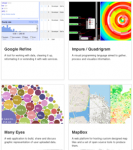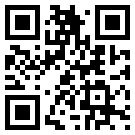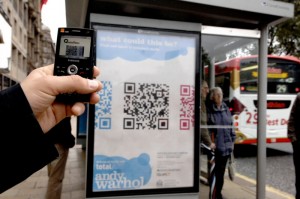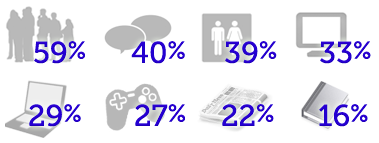Community Embraces New Word Game at Mid-Year Play Day This past Sunday, families at Takoma Park’s Seventh Annual Mid-Year Play Day had the opportunity to experience OtherWordly for the first time. Our educational language game drew curious children and parents to our table throughout the afternoon. Words in Space Several children gathered around our iPads […]
Read moreTag: Data
 Images gain new meaning when given the context of location or change. Two sites, from NASA and HistoryPin do this to good effect — such as showing the the dramatic melting of the Muir glacier in Alaska, or how a city evolves.
Images gain new meaning when given the context of location or change. Two sites, from NASA and HistoryPin do this to good effect — such as showing the the dramatic melting of the Muir glacier in Alaska, or how a city evolves.
Launched in autumn 2011 by a British nonprofit, HistoryPin pins historical items on a map. Their service demonstrates the potential for a global, crowdsourced database of historical media. (more…)
 Most data is meaningless to most people — unless it is visualized. Stepping beyond familiar visualizations like bar charts and pie charts, there are many approaches to visualizing data, from mapping (e.g., color coding a map to show voting patterns) to visualizing networks (e.g., the links between people).
Most data is meaningless to most people — unless it is visualized. Stepping beyond familiar visualizations like bar charts and pie charts, there are many approaches to visualizing data, from mapping (e.g., color coding a map to show voting patterns) to visualizing networks (e.g., the links between people).
You are not limited to Microsoft Excel, or your own programming abilities. We’re now in an awesome generation for visualization, with dozens of freely available software libraries — which developers have spent months (or years!) building. Increasingly these use Javascript (so they work in all browsers and mobile devices). The folks at Datavisualization.ch highlight most of the best tools for making maps and charts, or processing data… (more…)
 Open textbooks are receiving a potential boost by an ambitious new, organized peer review project organized by the University of Minnesota. The average college student suffers with $1,000 or more in annual textbook costs; however, if more professors adopt open textbooks, higher education will become more affordable. (more…)
Open textbooks are receiving a potential boost by an ambitious new, organized peer review project organized by the University of Minnesota. The average college student suffers with $1,000 or more in annual textbook costs; however, if more professors adopt open textbooks, higher education will become more affordable. (more…)
 QR codes are a way to send information to mobile devices (e.g., a smartphone) using its camera. You send a short blurb of text, or a web address (URL) by representing it as a code which people photograph from their phone.
QR codes are a way to send information to mobile devices (e.g., a smartphone) using its camera. You send a short blurb of text, or a web address (URL) by representing it as a code which people photograph from their phone.
The codes are easy to generate. Several web sites and software programs will make the codes for you.
 To read the codes, users need a QR reader app to take a snapshot of the code with their device’s camera. The app returns the decoded text or web URL.
To read the codes, users need a QR reader app to take a snapshot of the code with their device’s camera. The app returns the decoded text or web URL.
In the photo at left, a pedestrian takes a photo of a QR code promoting an Andy Warhol show.
There are hundreds of barcode-reader apps (e.g., RedLaser and QuickMark for iOS and Android devices, and the Kaywa reader for dumber smartphones), and code-reading can be included in custom apps, e.g., a museum tour. (more…)
Smartphones (e.g., the iPhone or Android) are commonplace, and education outreach projects need make use of this reality. People use their smartphones while doing all kinds of things. For example:

(Left to right, top: while waiting in line, socializing, in the bathroom, while watching TV; bottom: while using a computer, playing video games, reading a paper, or a book.)
The most common place to use a smartphones is at home (93% of smartphone owners), but people use their smartphones all kinds of places: (more…)
 Open access means that readers have free access. But who pays for the operational costs of running a publication? Often it’s the authors, though there are several common business models.
Open access means that readers have free access. But who pays for the operational costs of running a publication? Often it’s the authors, though there are several common business models.
How much are authors paying? What do they think about it? And what are some other business models to sustain journals and other kinds of digital content? (more…)
 Open access journals are transforming how researchers share information, and how the public can access it. They are peer reviewed journals which are digital, online, free of charge, and free of most copyright and licensing restrictions.
Open access journals are transforming how researchers share information, and how the public can access it. They are peer reviewed journals which are digital, online, free of charge, and free of most copyright and licensing restrictions.
Open access journals are now commonplace. As of last lear, nearly 10% of scholarly articles were published in open access journals. There are now currently over 7500 open access journals, according to the Directory of Open Access Journals (DOAJ), which indexes freely available, peer-reviewed journals that don’t have an embargo period (see criteria). (more…)


 Metadata is a the glue that makes information useful. It is data about data. It could be a title, location, and camera settings for a photo; the history of a painting; the materials in a museum object; the authors of a journal article; or the time, date, and location of photo of a butterfly for a citizen science project. “Tags” added to blog posts, photos, or tweets are all a form of metadata, allowing others to quickly hone in on related items.
Metadata is a the glue that makes information useful. It is data about data. It could be a title, location, and camera settings for a photo; the history of a painting; the materials in a museum object; the authors of a journal article; or the time, date, and location of photo of a butterfly for a citizen science project. “Tags” added to blog posts, photos, or tweets are all a form of metadata, allowing others to quickly hone in on related items. Cloud computing is a metaphorical term for hosted services on the Internet. This can be infrastructure (i.e., raw equipment), platforms (e.g., operating systems, basic software like databases or web servers), or software (e.g., content managements systems, social networking software). Typically, it is sold on metered basis, like a utility charges for water.
Cloud computing is a metaphorical term for hosted services on the Internet. This can be infrastructure (i.e., raw equipment), platforms (e.g., operating systems, basic software like databases or web servers), or software (e.g., content managements systems, social networking software). Typically, it is sold on metered basis, like a utility charges for water. Museums and archives manage information about their collections, facilitate interdepartmental communication, and make collections available to the public using collection management software. Here’s a rundown of the collection management systems being
Museums and archives manage information about their collections, facilitate interdepartmental communication, and make collections available to the public using collection management software. Here’s a rundown of the collection management systems being